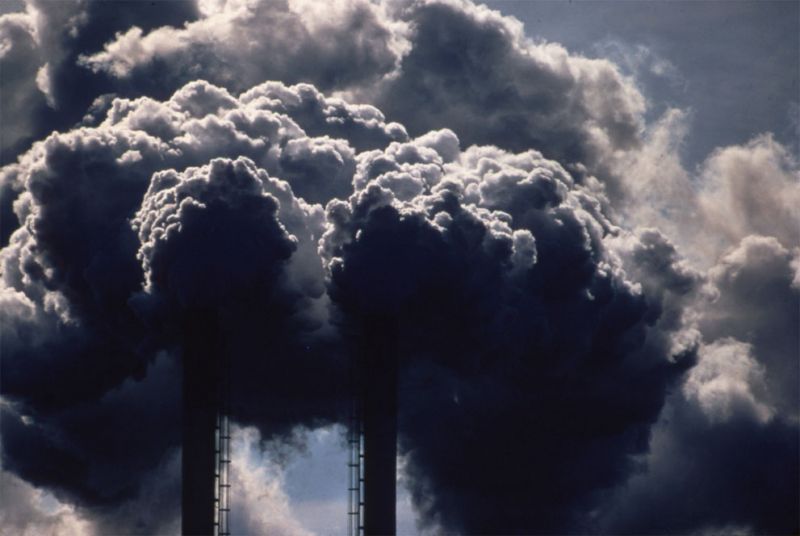
<a href="http://www.youtube.com/watch?v=yu23HHmOG48" target="_blank">Mary Poppins</a>/YouTube
It’s no secret that fireplaces and woodstoves—wonderful and cozy though they may be—are not great for the environment. The smoke that they produce is full of harmful particles, including, according to the EPA, volatile organic compounds and the likely carcinogen benzo(a)pyrene. Smoke can foul up the air both inside and out, and exposure to the stuff can cause serious respiratory problems.
So should you board up your hearth for good? Not necessarily. The right equipment can help, as can proper burning techniques.
To find out exactly how to make the most efficient fire possible, I enlisted the help of Clay Thompson, a working chimney sweep based in Sacramento, California. According to the Chimney Safety Institute of America, there are about 5,000 working chimney sweeps in the United States. You may be as disappointed as I was to learn that Thompson, who has been sweeping six chimneys a day five days a week for 13 years, says that unlike that other notorious chimney sweep, Mary Poppins’ boyfriend, he sings only in the car and never dances. Also, he uses brushes instead of, you know, climbing on in. “Most modern chimneys are only six inches wide,” he says. “I don’t know how Santa does it.” Anyway, here are Thompson’s tips:
-
If you have a fireplace, consider an insert. A fireplace insert is like a wood-burning stove that fits right into your fireplace. EPA-certified models burn 70 percent more efficiently than an open fireplace.
-
 Chimney sweep Clay ThompsonUpgrading to new equipment could save you money. If your fireplace insert or stove was made before 1992, you might want to consider a newer, EPA-certified model. Although they can be pricey, the agency-approved stoves and inserts not only produce less smoke and soot, they’re also 50 percent more efficient than traditional models—so you’ll end up spending less on fuel. They’re also much easier to clean, says Thompson: “I dread those old inserts. They weigh 600 pounds, and then there’s six to eight inches of soot inside. You can’t even see anything, and it takes two and a half hours. I have to change my clothes after that. I work as a chimney sweep but I don’t like getting dirty.” For several years, people who upgraded their fireplaces and wood stoves qualified for a federal tax credit, but that program expired this year. Some states offer their own programs; the Alliance for Green Heat lists them here.
Chimney sweep Clay ThompsonUpgrading to new equipment could save you money. If your fireplace insert or stove was made before 1992, you might want to consider a newer, EPA-certified model. Although they can be pricey, the agency-approved stoves and inserts not only produce less smoke and soot, they’re also 50 percent more efficient than traditional models—so you’ll end up spending less on fuel. They’re also much easier to clean, says Thompson: “I dread those old inserts. They weigh 600 pounds, and then there’s six to eight inches of soot inside. You can’t even see anything, and it takes two and a half hours. I have to change my clothes after that. I work as a chimney sweep but I don’t like getting dirty.” For several years, people who upgraded their fireplaces and wood stoves qualified for a federal tax credit, but that program expired this year. Some states offer their own programs; the Alliance for Green Heat lists them here.
-
Burn the right kind of fuel. Rule of thumb: The cooler your fire, the more particulate emissions and soot it produces. In order to ensure that your fire is hot enough, Thompson recommends using only wood that has been “seasoned” (dried) for at least a year. Hard woods (like maple, ash, oak, and beech) burn hotter than soft woods (pine and fir). Most importantly, never burn wet wood. Pellet stoves, which take bricks made of compressed wood or other organic materials, generally burn cleaner and more efficiently than woodstoves or fireplaces. This EPA chart compares particle emissions from various heat sources:
 Image courtesy of EPA
Image courtesy of EPA
-
Use the right sized grate for your fireplace. “A lot of people buy a grate that is too big for their fireplace and then spread out the logs,” says Thompson. For the hottest and hence cleanest-burning fire possible, “you want those logs all bundled together in the center.”
- Skip the home chimney-cleaning remedies. There are a bunch of old wives’ tales about DIY chimney sweeping; Thompson says that several of his customers have tried to clean their chimneys by starting a fire with potato peels or rock salt. “Those don’t seem to work.” Another bad idea: “Some people try to start a chimney fire to clean their chimney,” he says. “Sometimes it does clean it, but sometimes it burns your house down.” For newer model fireplace inserts and stoves, Thompson recommends a professional inspection and sweeping about every two years, or one cleaning for every cord of wood burned. But if you have older equipment, or if you regularly burn wood that isn’t properly seasoned, you could end up needing a sweeping much more frequently. Thompson’s company charges $149 for a one-story sweeping, but prices vary by region.
It should also be noted that the while fuel stoves in the United States are often considered ornamental, Europeans are increasingly using pellet stoves as a primary source of heat. The Alliance for Green Heat points out that these stoves produce fewer climate-warming greenhouse gases than fossil fuels.
Wood and pellet stoves are far from the only hearth-based heat contraptions available. If you’d like to geek out on hydronic heaters, masonry heaters, and more, the EPA’s site on appliances is a good place to start. Want to compare efficiency and emissions of various models? Go further down the rabbit hole with Cornell Cooperative Extension’s extremely thorough guide.















